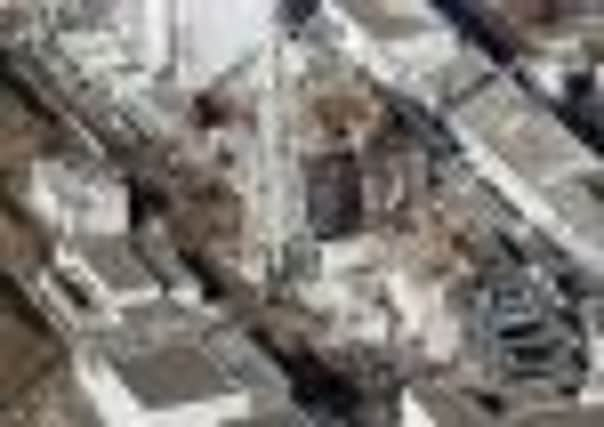Japan: Systems on at tsunami-damaged nuclear plant


Tokyo Electric Power Co (Tepco) said the cooling system at the last pool at the Fukushima Dai-ichi plant was repaired early yesterday. It said pool temperatures were well within safe levels and the reactors were unaffected. The company said workers were still trying to determine the cause of the problem, which began when a brief power failure hit the plant.
About 50 workers in hazard suits and full-face masks were sent in to fix cabling that involved the last of the three switchboards suspected to be a cause of the problem. The utility had also prepared a back-up system in case the repairs didn’t fix the issue and “the worse comes to worst”, Tepco spokesman Masayuki Ono said.
Advertisement
Hide AdAdvertisement
Hide AdThe earthquake and tsunami that hit Japan on 11 March, 2011, destroyed the plant’s power and cooling systems, causing three reactor cores to melt and fuel storage pools to overheat. Massive radiation leaks from the plant have contaminated air, water and soil around the plant, and about 160,000 residents were forced to evacuate the area.
The current power outage will test whether Tepco has learned anything from the disaster. The firm, which has repeatedly faced accusations of covering up bad news, was slammed by local media yesterday for waiting hours to disclose the blackout.
Mr Ono acknowledged the plant was vulnerable. He said: “Fukushima Dai-ichi still runs on makeshift equipment, and we are trying to switch to something more permanent and dependable. Considering the equipment situation, we may be pushing a little too hard.”
He said the utility did not immediately try to switch to a back-up cooling system because doing so without finding and fixing the problem could lead to a repeat. But he prioritised power restoration.
There is a back-up cooling system but no back-up outside power. Tepco said it will now consider installing back-up outside power for the pools.
Reactor units 3 and 4 shared a makeshift switchboard that sits on the back of a truck – an upgrade was being planned for later this month. Reactor cooling water pumps also sit on the back of a truck, with hoses travelling miles to reach the reactors.
“We have a ton of problems that still needs to be taken care of to overcome the challenges that we have never experienced,” Mr Ono said. But he denied the power blackout would affect the plant’s long-term clean-up plans.
Regulators have raised concerns about the makeshift equipment and urged the plant to move to a more permanent arrangement.
Advertisement
Hide AdAdvertisement
Hide AdThe operator has yet to remove melted, fatally radioactive fuel from the reactors before fully decommissioning the plant, a process officials have said could take 40 years.
Yoshihide Suga, the government’s chief spokesman, sought to allay concerns, saying: “In a sense, we have put in place measures that leave no room for worry.”
The command centre at the plant suffered a brief power outage on Monday evening. Electricity was quickly restored to the command centre, but not to equipment pumping water into the fuel pools.
The temperature in the four pools had risen slightly, but was well below the utility’s target control temperature of 65C, Tepco said.
Yuko Endo is chief of Kawauchi village, part of which remains restricted due to radiation contamination, keeping hundreds of residents away from their homes.
He said: “We don’t believe the Fukushima disaster is under control.”
Officials are struggling to make the area liveable again, but people cannot return home unless they feel confident about the plant’s stability, he said.